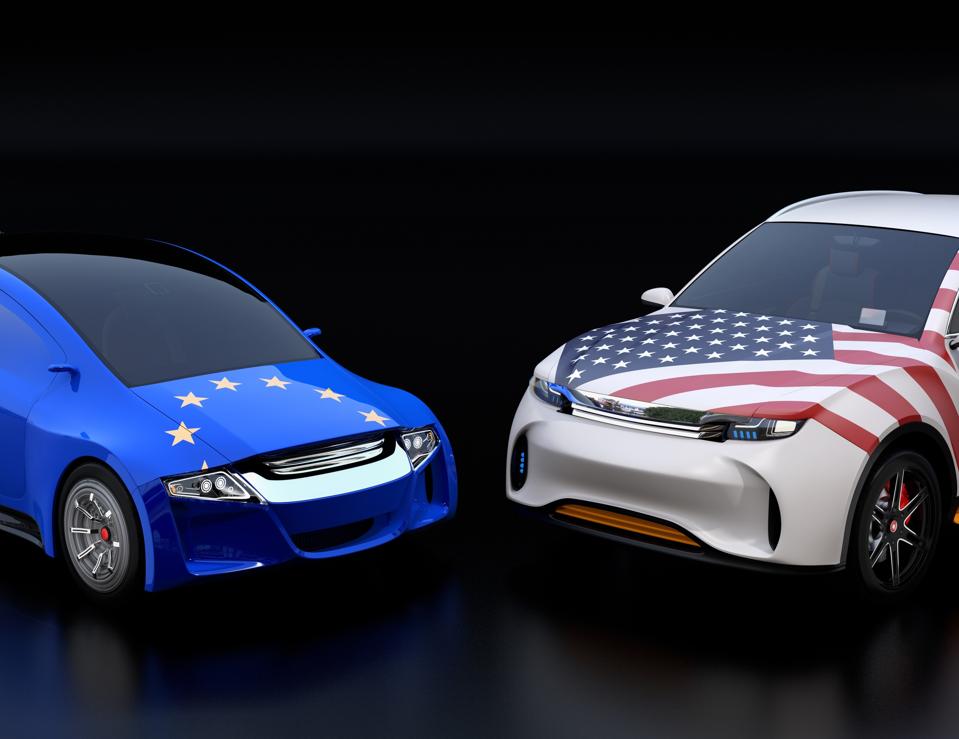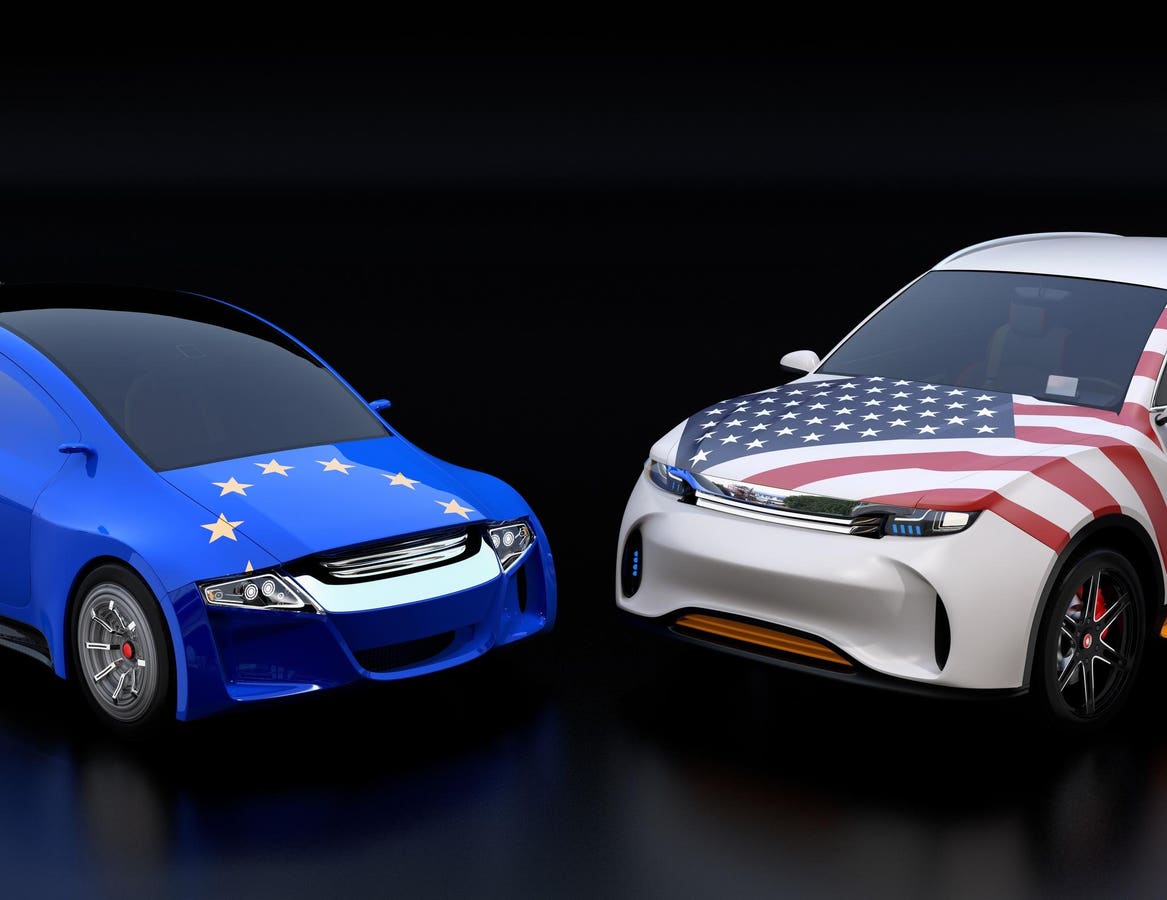
EU and U.S. flags on two automobiles hood. black background. Europe USA trade war, American tariffs concept. 3D rendering image.
getty
Europe’s carmakers, facing weaker sales and increased Chinese competition, will now have an added burden from U.S. tariff challenges.
Sales of sedans and SUVs in Western Europe will likely slip about 2% in 2025, according to Auto Forecast Solutions, while GlobalData expects a 1.4% decline to 11.4 million. That compares with stagnation in 2024 and a big jump in 2023 of nearly 14% after the Covid pandemic. Current sales are still about 3 million shy of pre-Covid.
“Difficulty in foreseeing growth in exports after the U.S. trade deal means the local market will grow slowly over the next few years,” Auto Forecast Solutions said in its latest monthly report.
Western Europe includes the big 5 markets of Germany, France, Britain, Italy and Spain.
European manufacturers’ second quarter financial reports included weaker profits, huge losses, and profit warnings. BMW was hurt the least as its profits declined, although the 5.4% margin was within its guidance. Mercedes cut its profit guidance. Volkswagen took a €1.3 billion ($1.5 billion) hit from tariff issue problems and cut its profit forecast. Multi-brand Stellantis lost €2.3 billion ($2.7 billion) in the first half. Volvo announced a $1 billion operating loss in the second quarter. Renault reported a net loss of €11.2 billion ($13.0 billion) in the first half.
Second-quarter poor but could worsen
HSBC Global Investment Research called second-quarter results disappointing but things could get worse.
“A tough quarter but it might not be the watershed we hoped for,” HSBC said in a report.
HSBC said the reasons were varied, including pricing in the EU and soft volumes. The EU tariff deal with the U.S. was welcomed because it lowered tariffs from the proposed 27.5% to 15%.
This compared with the previous 2.5%.
“But most of the carmakers were hoping for something more generous that reflected U.S. exports from BMW and Mercedes, or inward investment in the U.S. for VW.,” according to the report.
Perhaps the Europeans should take some comfort after a report from the Wall Street Journal on Thursday which said automakers will take a collective set of losses totalling almost $12 billion from what it called the “tariff wars”. Many foreign manufacturers will need to move production to the U.S., it said. The list was headed by Toyota with losses of just over $3 billion. Volkswagen was way back in second place on the list with losses about half that, with GM and Ford red ink close to $1 billion.
“Beyond the continuing cost of tariffs, automakers in the U.S., Japan, South Korea and Europe face years of retooling and supply-chain tweaks to adjust to the new realities,” according to the WSJ’s Stephen Wilmot.
Mergers, or the demise of weaker brands
In Europe, manufacturers are being pressured by European Union rules designed to force all new car buyers into electric vehicles by 2035 and 80% by 2030. The rules were set up despite China’s clear advantage in EV technology. This will put huge pressure on European profits as they struggle to meet ever-tighter CO2 emissions rules while being forced to shed big profit-making internal combustion engine-powered vehicles.
This is likely to force weaker participants into mergers or may see the demise of marginal brands. Meanwhile, the Trump Administration has dumped its mandates to force buyers into EVs. This means that instead of previously mandated 50% share of EV new car sales by 2030, the market will allow consumers to decide, and market share is likely to be closer to 20%. Some politicians in the European Parliament are seeking to dilute EU rules. This may become more urgent if important European manufacturers look to be in danger of collapse at the expense of Chinese success.
